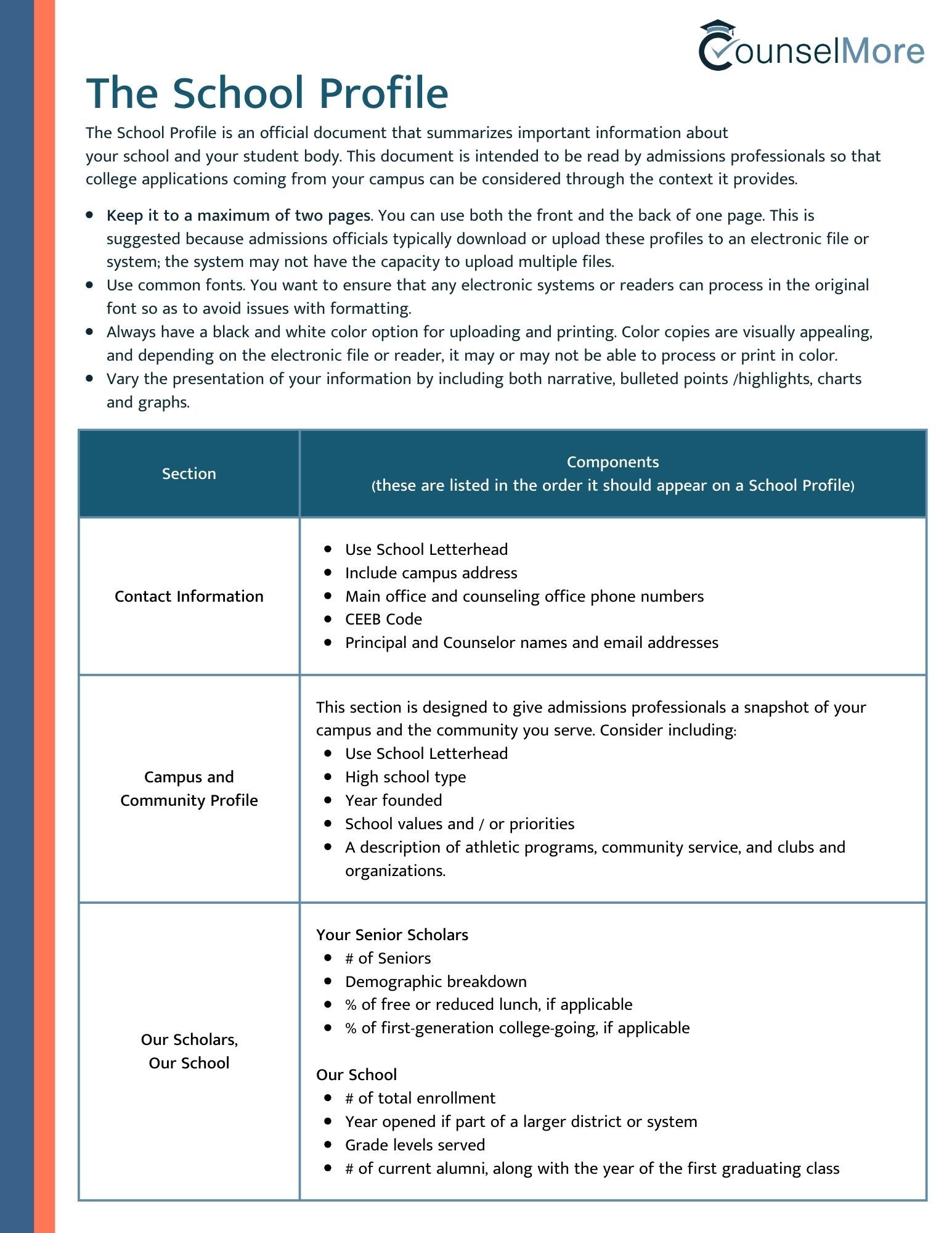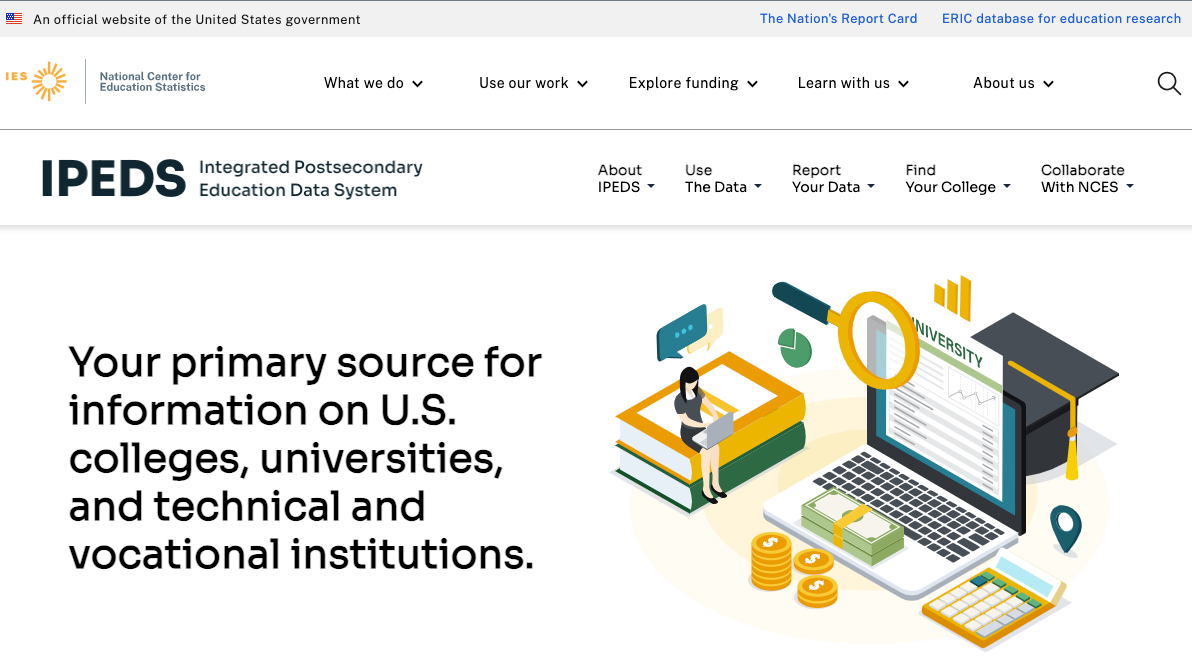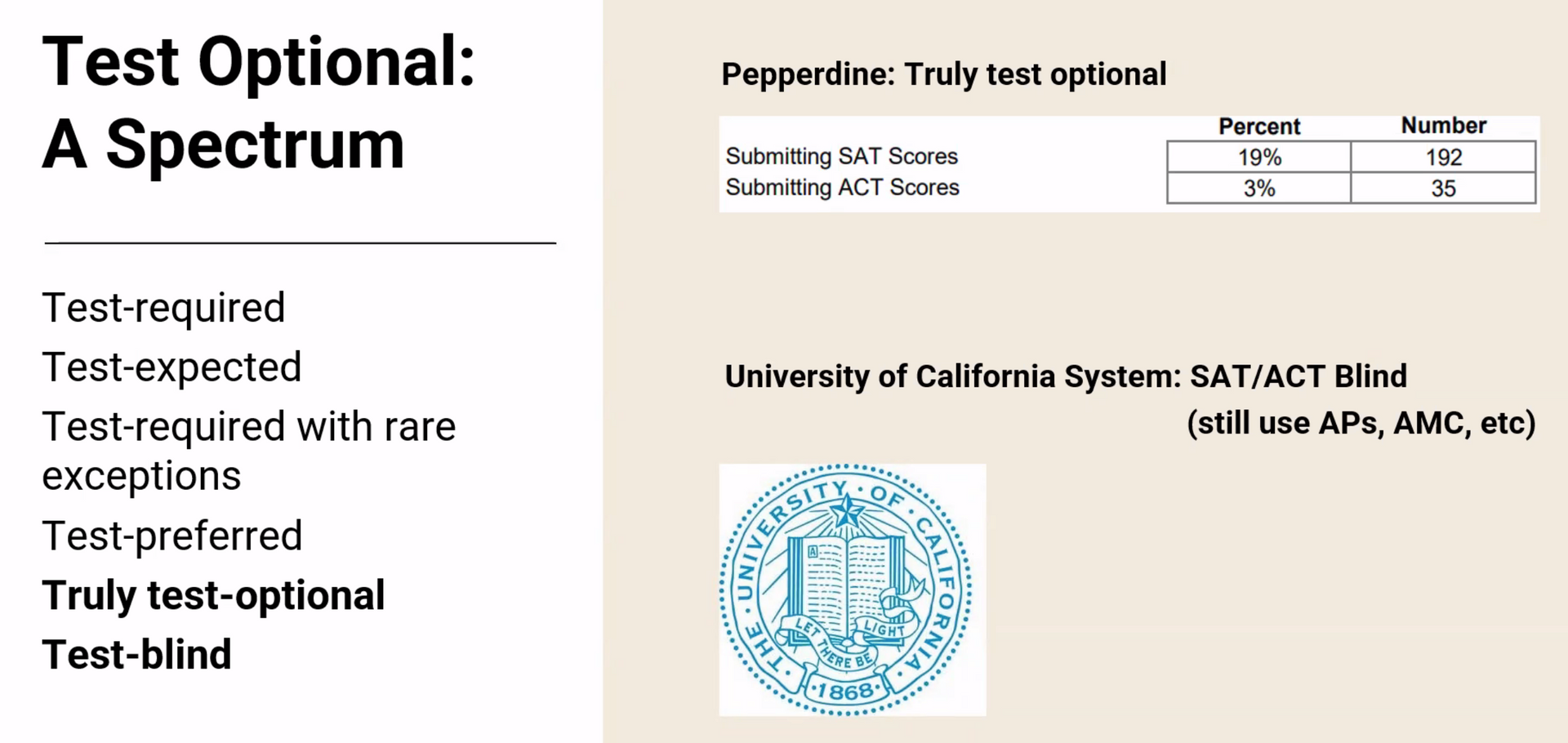Crafting a Comprehensive High School Profile: Essential Elements & Best Practices

Sometimes the role of the College Counselor includes the responsibility of refreshing the school's public profile page.
A well-designed school profile is a key communication tool that can make a significant difference in how colleges, universities, and employers understand your students’ academic journey. This guide will help educational institutions create profiles that showcase their strengths and academic rigor while supporting students’ goals.
Creating a high school profile that effectively communicates your school’s unique characteristics and values is crucial to helping students stand out during college admissions. A well-crafted profile not only provides vital information about the academic environment but also contextualizes student performance and highlights the opportunities your school offers. Below, we guide you through essential elements for developing a standout high school profile, aligned with best practices recommended by the National Association for College Admission Counseling (NACAC).
Whether you are revisiting an existing profile or creating a new one, here’s a structured approach for building an effective school profile.

Purpose of a School Profile
A high school profile serves as a bridge between the school and admissions officers. It is used to interpret students' transcripts, grading standards, and educational context. When thoughtfully prepared, this profile can give colleges, universities, and even potential employers insight into what students have achieved in light of your school’s academic offerings and environment.
Core Elements to Include in a School Profile
School Mission Statement
- Purpose: The mission statement summarizes your school’s values and educational philosophy. This element gives admissions officers context about the goals your school prioritizes, whether that’s academic excellence, community involvement, or student leadership.
Key Staff and Contact Information
- Include the names and contact details of primary points of contact, such as the principal, college counselor, and registrar. This ensures quick access for follow-up questions.
Information About the School Community
- Context: Provide a brief description of your school and its surrounding community. Highlighting factors such as student demographics, local economic conditions, or unique regional attributes helps admissions teams understand the background of your students.
Graduation Requirements
- Clarity in Expectations: Listing graduation requirements illustrates the academic expectations at your school. Include required credits, course types, and any specific electives or capstone projects necessary for graduation.
- Transparency: A clear explanation of grading scales and GPA calculation helps admissions officers interpret student achievement accurately. Outline how grades are derived, any weighting for advanced courses (AP, IB, or honors), and any unique academic policies.
Student Learning Experiences and Opportunities
- Highlighting Distinctions: Include information about specific programs that make your school unique, such as specialized courses, independent study options, or partnerships with local organizations for internships or service learning.
Portrait of a Graduate or Vision of a Graduate
- Graduate Portrait: Many schools are now including a “Portrait of a Graduate” section, which describes the transferable skills or attributes that students are expected to develop. This could include qualities like critical thinking, collaboration, and resilience, which go beyond academic achievement.
Standardized Test Scores
- Academic Benchmarking: Including recent SAT, ACT, AP, or IB scores provides benchmarks that help colleges gauge your students’ performance relative to national standards. Share average or median scores from recent graduating cohorts to give a snapshot of academic readiness.
Co-Curricular Activities
- Student Involvement: Provide an overview of the clubs, sports teams, and volunteer opportunities available to students. This demonstrates the well-rounded experiences students can have and gives insight into school culture.
College and Career Outcomes
- Post-Secondary Pathways: Listing where recent graduates have been accepted, along with data on military or career placements, can add credibility and demonstrate the success of your school’s programs.
RESOURCES FOR EDUCATIONAL PROFESSIONALS - SIGN UP BELOW
Additional Components for Enhanced School Insights
College and University Acceptances
- A list of schools that recent graduates attended can illustrate the post-secondary pathways your students are prepared to take.
Post-Secondary Plans
- Break down the percentage of students who enter four-year colleges, two-year colleges, military service, or enter directly into the workforce, offering a clear sense of student trajectories.
Tips for Accessibility and Usability
To ensure your profile is accessible to a wide audience:
Keep it Online:
- Make sure the profile is easy to find on your school’s website.
User-Friendly Format:
- Present the profile in a downloadable, easy-to-navigate PDF format, with consistent and informative section headings.
Clear Layout:
- Use a clean design with organized sections that allow readers to quickly locate relevant information.
Using a Checklist to Review Your Profile
Regular updates to your profile are essential to keep it relevant. NACAC suggests using a checklist to ensure your profile aligns with best practices.
Here are some key points to review:
Current Mission and Values:
- Are the mission and values of your school accurately reflected?
Updated Data:
- Are your graduation requirements, grading scale, and standardized test scores current?
New Opportunities:
- Have there been new courses, programs, or unique experiences added that should be highlighted?
Formatting and Accessibility:
- Is your profile easy to find online, downloadable, and visually accessible?
A well-constructed school profile is a powerful tool for your students. By following these best practices, you’ll create a profile that positions them for success by clearly communicating the strengths and values of your school. Regularly updating your profile and aligning it with the guidelines above ensures it remains a valuable resource for admissions officers, providing them with the context needed to fully understand the unique achievements of your students.
-
 Read Now
Read Now -
 Read Now
Read Now -

Why Educational Planners Choose CounselMore
Read Now -

Aspiring IECs and College Counselors
Read Now -

Don't Miss This Chance
Post your article on the CounselMore Blog
Read Now -

CounselMore members enjoy more benefits
Read Now -

Slide title
Write your caption hereJoin your peer-professionals in conversations











